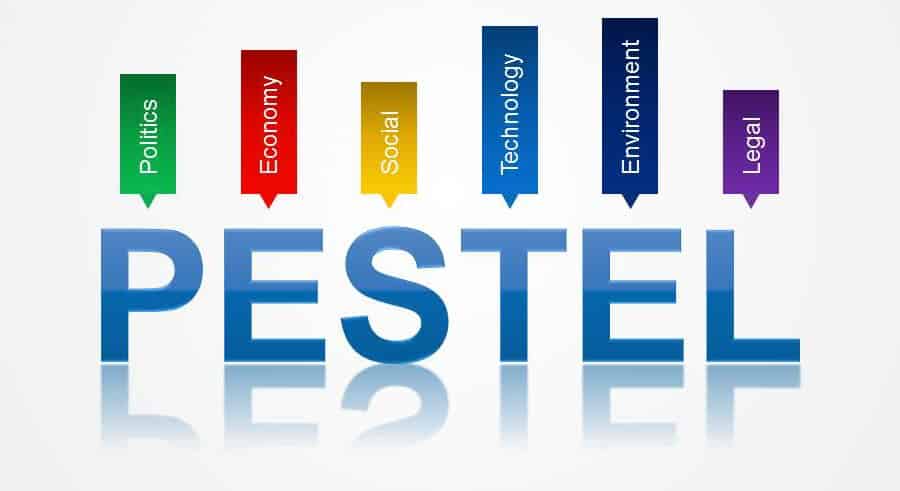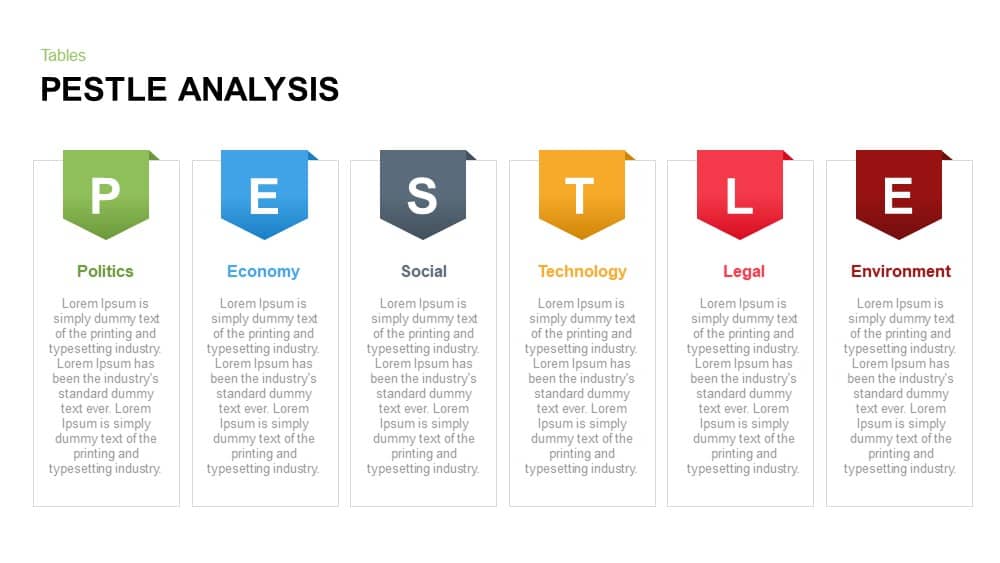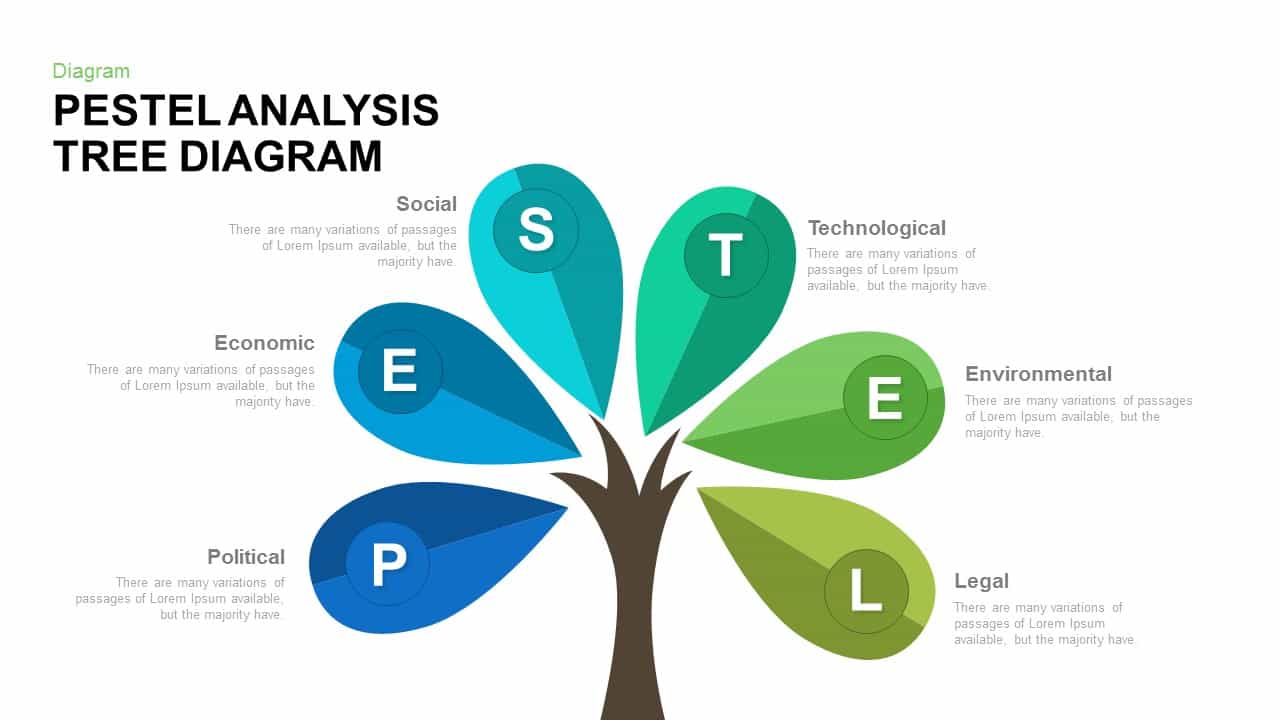PEST and PESTLE Model for Business Analysis (Templates Included)

To understand market situations and new market trends, market researchers often use the PEST analysis tool. A PEST analysis or the extended form PESTLE analysis is a structure or tool used by marketers to analyze and screen the macro-environmental (external marketing environment) factors that have an influence on an organization and its future growth. PEST is the abbreviated form of the political, economic, social, and technological factors that can affect the activities and performance of an organization. PESTLE analysis is wider, which includes two more variables that affect organizational growth, i.e. legal and environmental.
PEST analysis is also prepared to evaluate the prospective of a new market. The general rule is that the more negative forces are affecting that market the harder it is to do business in it. The problems that will have to be dealt with considerably reduce profit potential and the organization can simply decide not to involve in any activity in that market. There are some definite questions that guide you to decide your business strategies, and whether the strategies or the business itself has to be implemented or not. These questions are to be prepared on the basis of the PESTLE framework. These questions give entrepreneurs an idea of what things to keep in mind. They are;
- What are the current political scenarios of the country and how can it impact the industry?
- What are the predominant economic factors?
- How much relevance does culture have in the market and what are its influencing factors? What cultural barriers would hinder the consumption of the company’s specific products?
- What technological advances are likely to pop up and make an impact on the market structure?
- Is there any current legislation that controls the industry or can there be any change in the legislation for the industry?
- What are the environmental concerns for the industry?
All the parameters are crucial for any industry a business might be in. It’s all about understanding the market. PESTLE structure represents the key element that moves the body forward. It is the tool of strategic management that not only defines what a company should do but also accounts for an organization’s goals and the strategies stringed to them.

In order to make a PESTLE analysis, the managers have to gather relevant information. So, the PESTLE model needs an integrated approach rather than specific approaches because these six variables are closely interrelated. Changes in one aspect may lead to changes in other aspects. It may be so, that the importance of each of the variables may be different to different kinds of industries, but it is inevitable to any strategy a company wants to develop that they conduct the PEST or PESTLE analysis. PESTLE analysis covers all external factors at a macro level. Ethical and demographic factors may overlap with these factors. To understand it better, the expansion of the acronym as follows;
1. Political factors:
A government’s interventions can always influence the future development of the country or a certain industry. It is the very determining factor that contributes to a country’s economic development and the future of industries. For instance, the imposing of new taxes or duties may cause changes in the entire revenue gathering structure of an industry. Political factors involve fiscal policy, trade tariffs, tax policies, political attitude towards foreign investments, stock market interventions, etc. that a government may levy around the fiscal year and it may affect the business or economic environment to a great extent. So, political factors are always influencing the growth and development of business. Political factors such as government stability, corruption level, trade control, import restrictions, environmental law, employment law, population policies, and health and protection laws are the few among them.
2. Economic factors
Economic factors are the key determinants of an economy’s performance that directly impacts a company and have produced long-term effects. For instance, an increase in the inflation rate of any economy would affect the way the company’s price their products and services. It may lead to making interest rate hikes and controlling the outflow of money available in the market. Adding to that, it would affect the purchasing power of a consumer and change the demand/supply model of that economy. Economic factors such as growth rates, price mechanism, unemployment trends, labor costs, credit availability, trade flows and patterns, monetary policies, fiscal policies have a great influence on determining business trends and future growth.
3. Social factors
A social factor is an umbrella concept that includes cultural trends, demographics, population analytics, psychological levels, women’s status, etc. These factors analyze the social environment of the market. For instance, during festival seasons there will be higher demands for consumer goods. Besides, social and cultural habits also determine what to buy and what not to buy. Hence, the companies should examine the socio-cultural factors of a country and frame their business strategies matching with the context. Social factors include health consciousness, education level, attitude towards saving and investing, lifestyles, religion and beliefs, social stratification, family size and structure, attitude toward product quality and customer service, attitude towards “green” or ecological products, etc.

4. Technological factors
Access to the newest technology is a key factor for any business or company. The innovations in technology may affect the operations of the company or industry and the market favorably or unfavorably. Technological factors such as basic infrastructure levels, rate of technological change, acceptance of newer technology, legislation regarding technology, internet infrastructure, penetration, etc.
5. Legal factors
Legal factors influence externally and internally. There are certain laws that influence the business environment in a certain country while there are certain policies that companies maintain for themselves. Legal legislations and newly imposed laws would affect the company’s smooth going and profitability. For example, mining companies may affect new legislation on environmental protection laws favorably or unfavorably. In most cases, environmental protection Acts would affect adversely on such companies. Legal factors such as Anti-trust law, intellectual property law, consumer protection, e-commerce, data protection law, etc. is major determinant of business.
6. Environmental factors
This aspect of the PESTLE analysis is crucial for businesses such as mining, farming, tourism, agriculture, etc. Environmental vulnerability is an ongoing discussion topic. So, if an entrepreneur likes to start a factory or a plant in such areas, he should think twice. He may not get social, political, and legal protection on those matters. Factors of business environmental analysis involve climate, weather, global changes, geographical locations, etc.
We hope that you have found the above article useful. Check out our PowerPoint templates for PEST and PESTLE models if you need them.
![How to Create a Business Case Presentation [Templates and Examples]](https://slidebazaar.com/blog/wp-content/uploads/2023/03/How-to-Create-a-Business-Case-Presentation-Templates-and-Examples.jpg)

